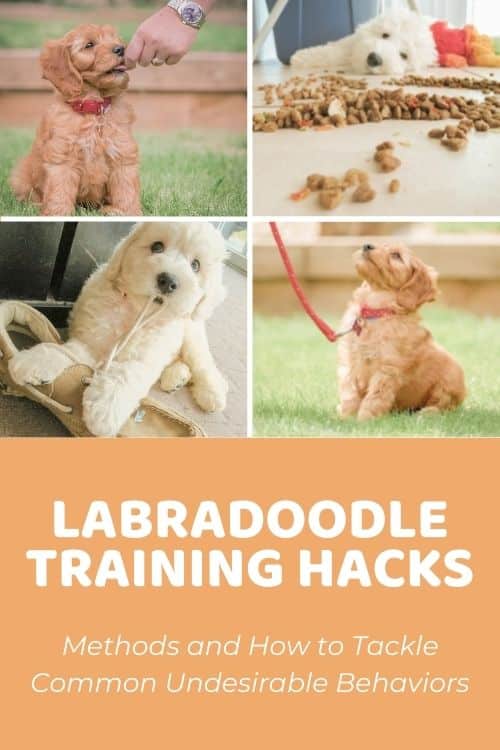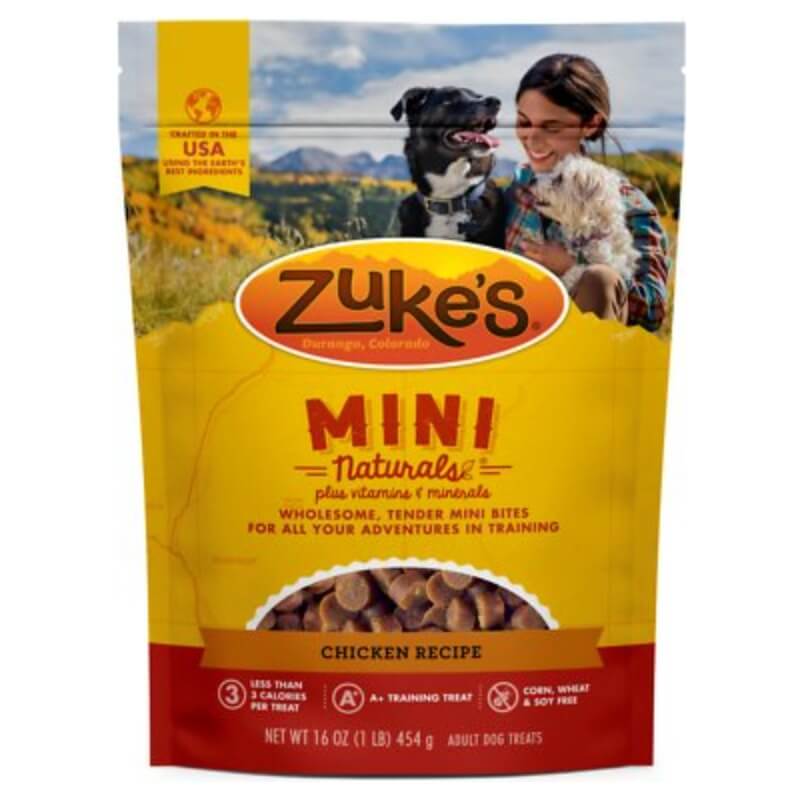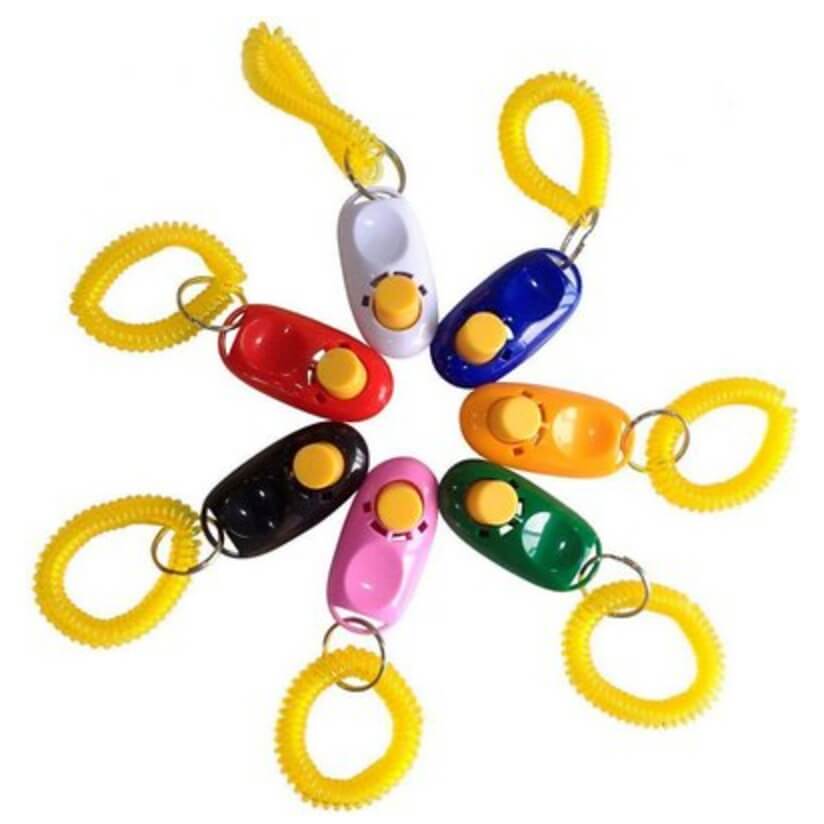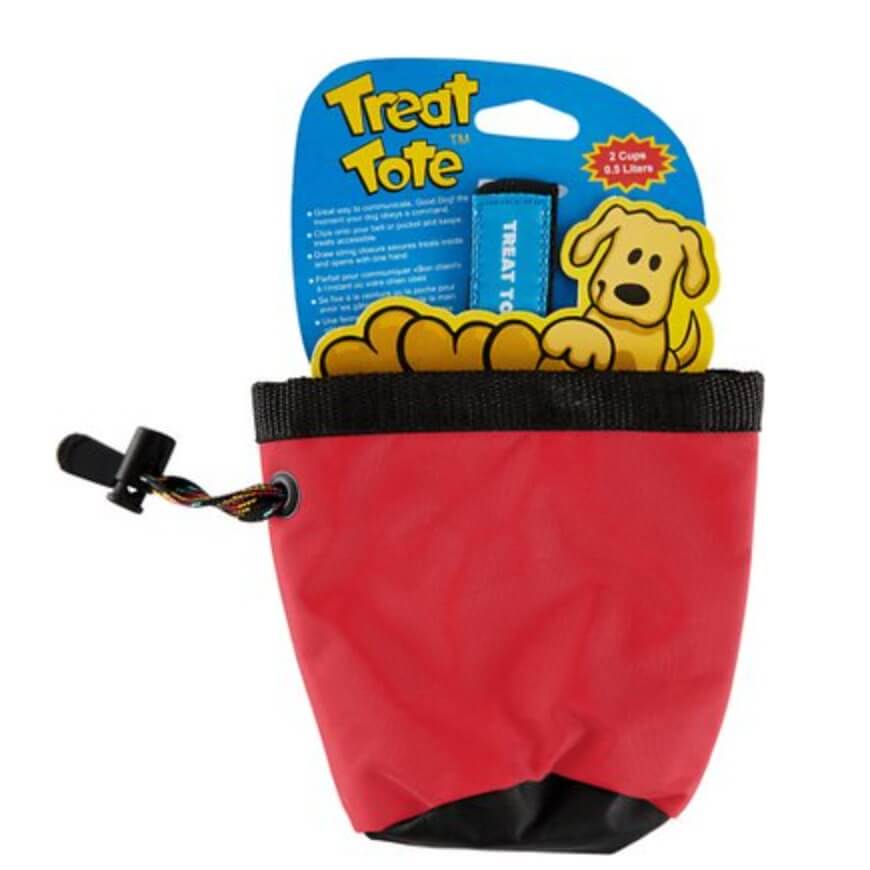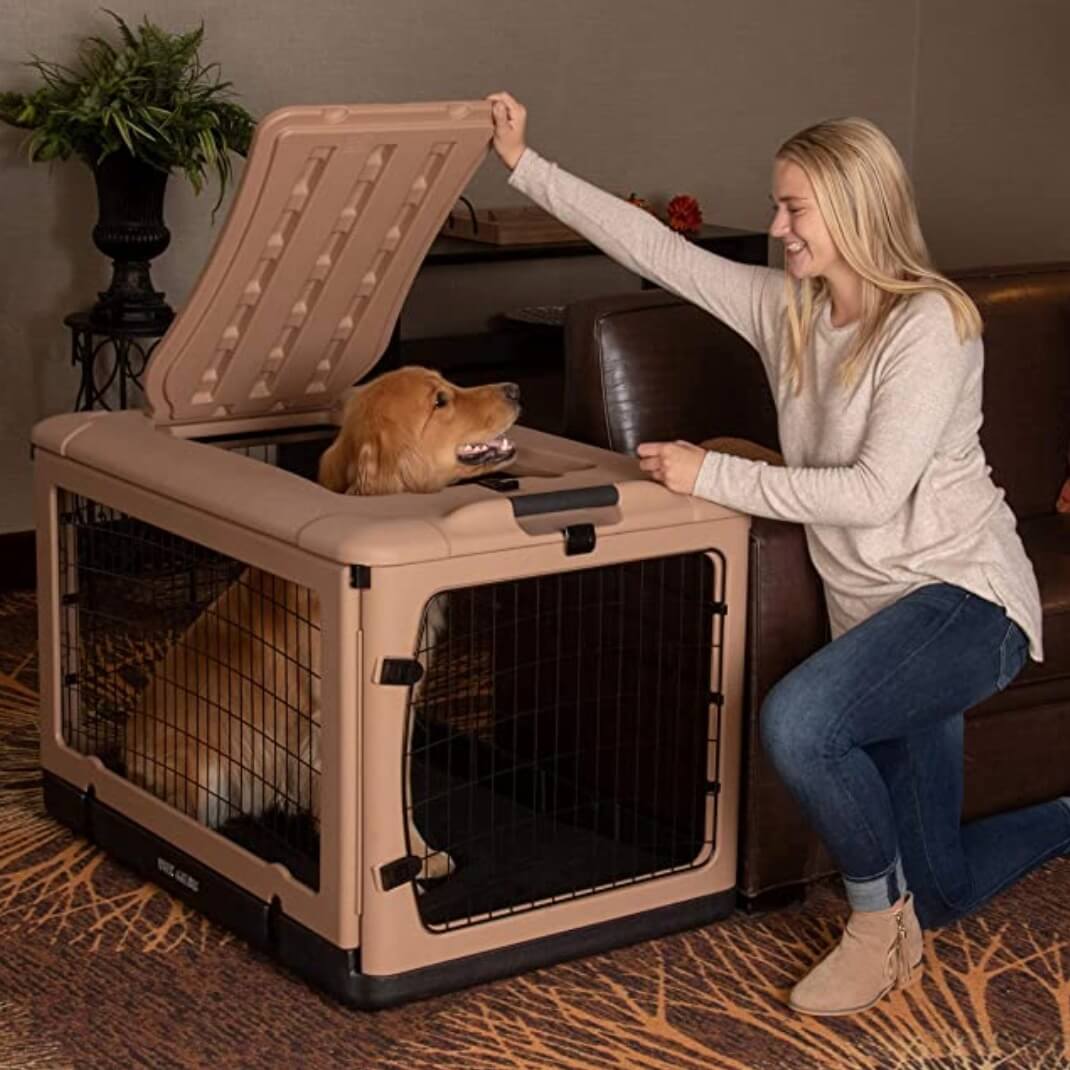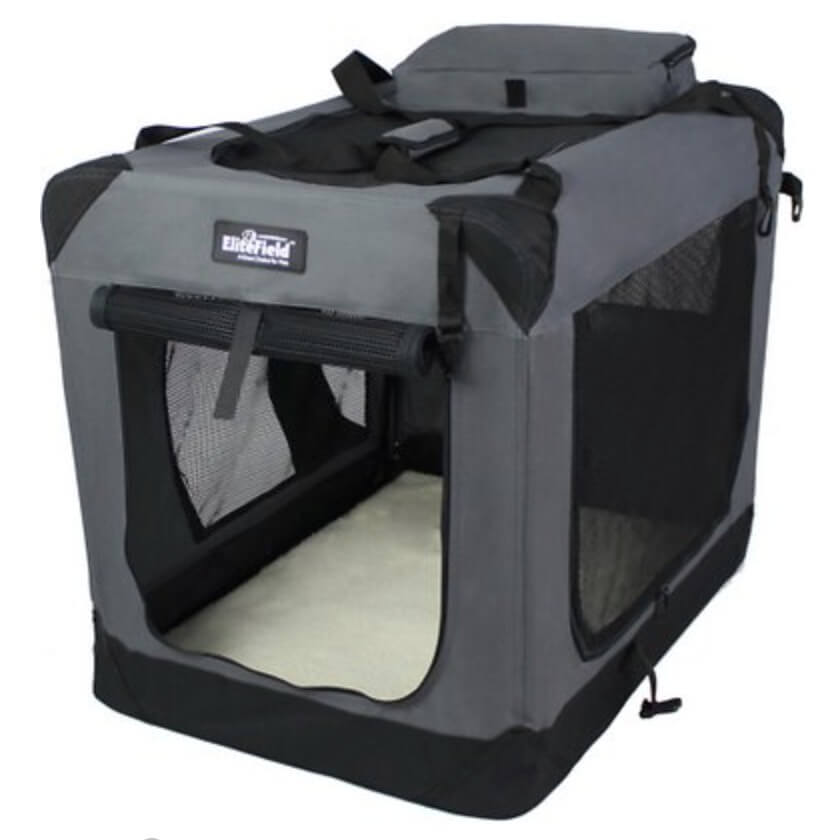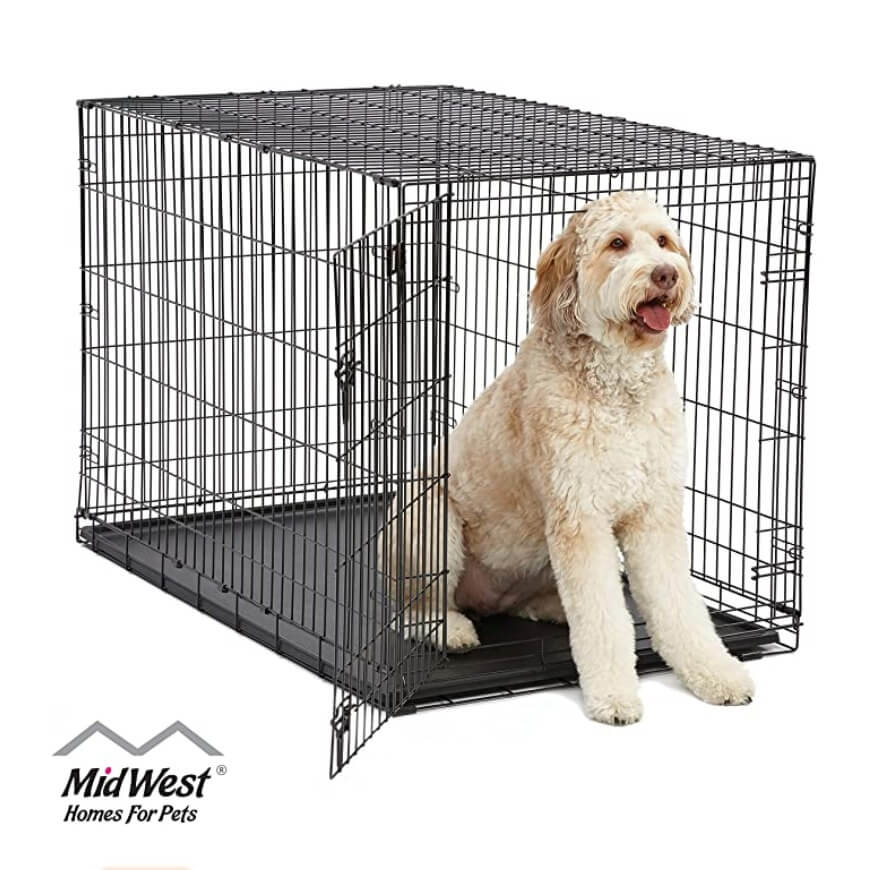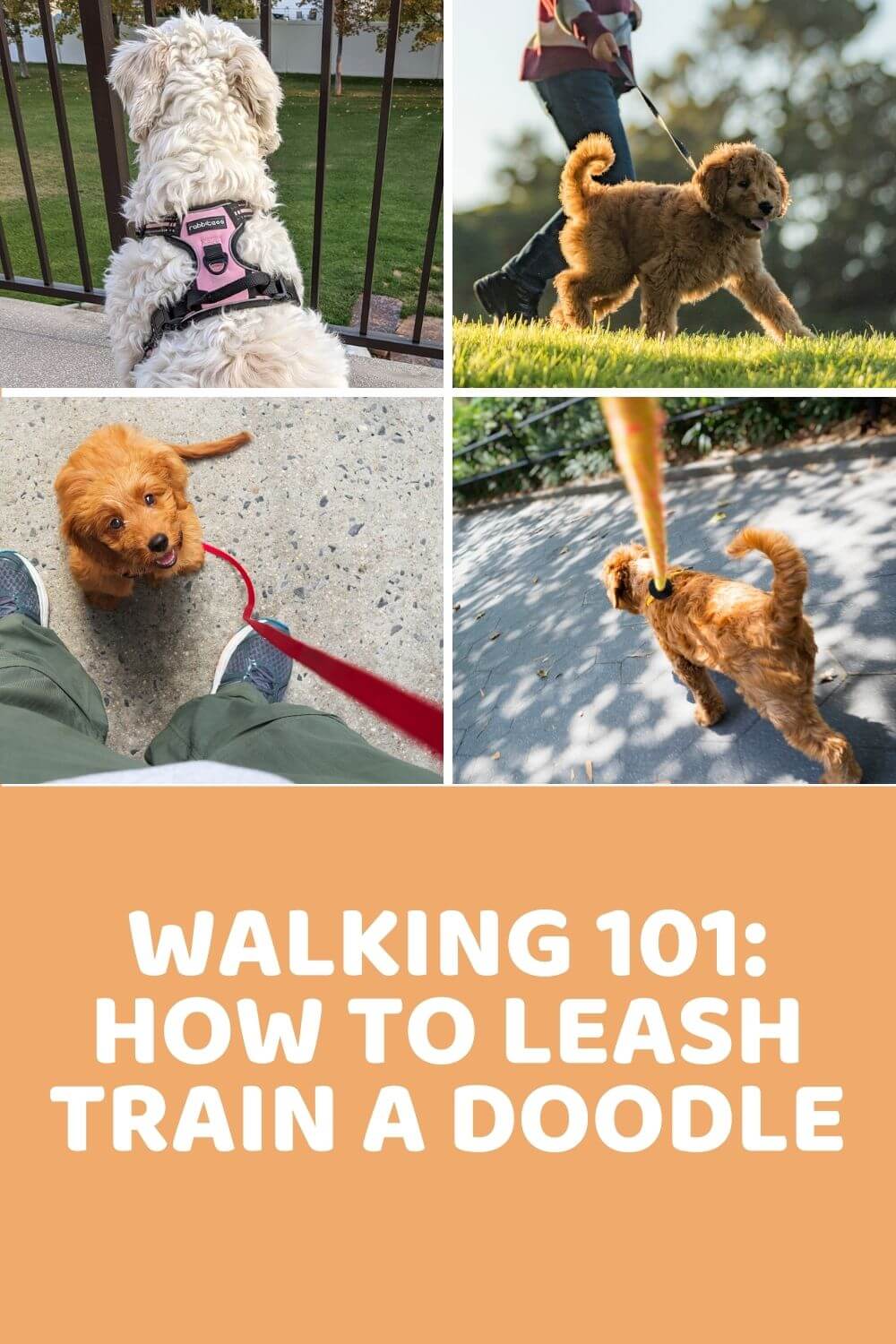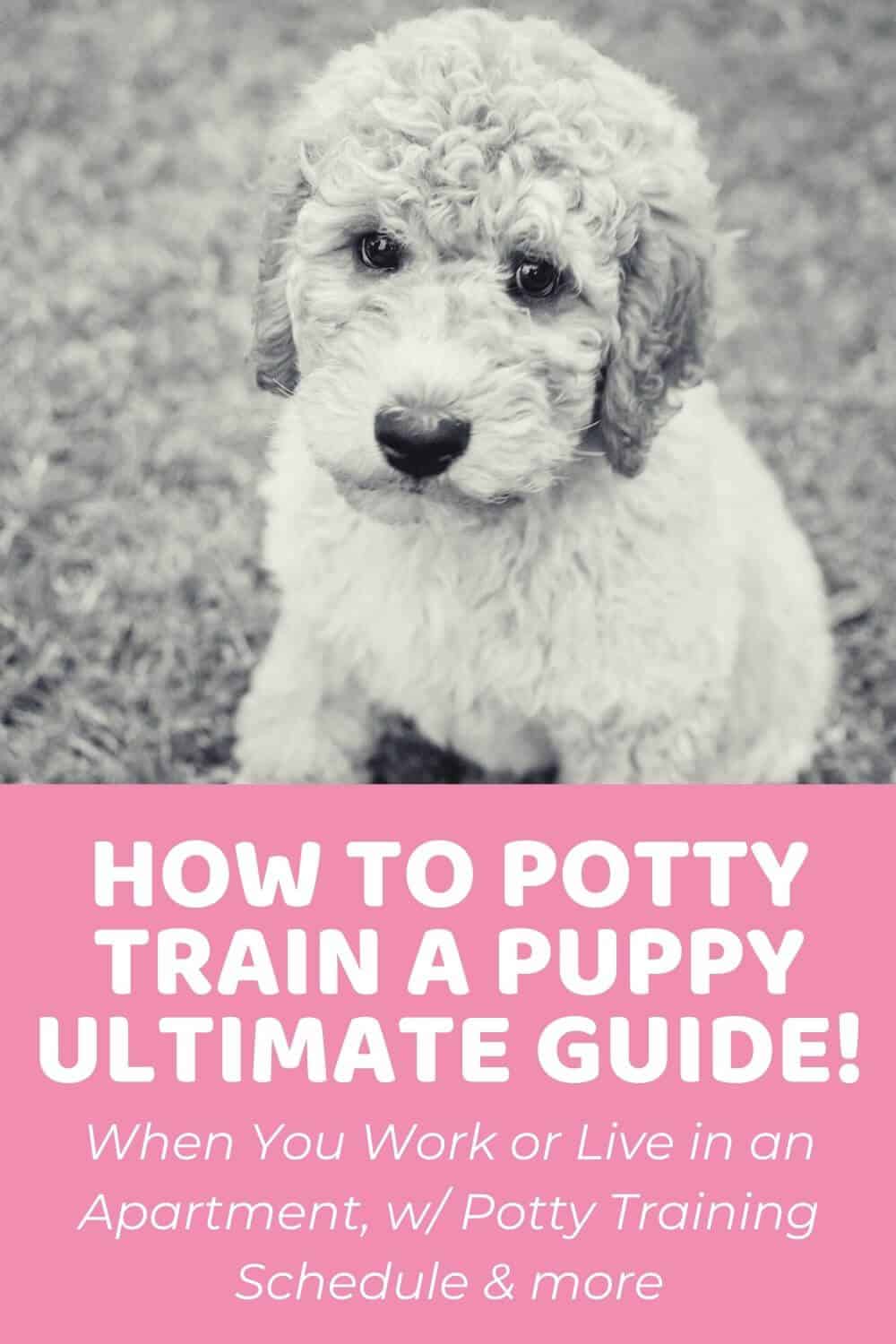Labradoodles, one of the earliest of all the Doodles, make terrific family pets. These loveable dogs are great with adults and children alike. However, early Labradoodle training and socialization are critical to their development. They require a calm yet firm and consistent hand to ensure they know how to act both in and away from home.
With a bit of research, some hard work, and a little patience, you can develop a secure, loving, and mutually respectful relationship with your pet. Below we have outlined different types of training, listed a few must-have items, and have included some top tips for dealing with common obedience issues.
When to Start Training Your Pup
You’ve picked up this cute bundle of fluff, and you’re happily headed home. You couldn’t be more excited to spend time with your new pal. Training is the very last thing on your mind as they wriggle sweetly about in your arms and lick your nose. You just want them to feel happy and loved with their new family, right?
Well, guess what… the very best way to make your new canine friend feel quickly at home with you is to establish clear boundaries from the get-go.
We’re not talking about expecting them to be house trained in a flash. This is more about setting ground rules so as to not leave them confused when they are allowed to do something one day and suddenly not the next.
So, for instance, if you won’t be letting them up on the furniture in the future, you should enforce this from day one.
Training is all about developing a consistent routine. For example, make sure to feed your new puppy and let them out to do their business at the same times each day. This all goes towards helping them feel comfortable and secure in their new environment.
The Best Way to Train Your Labradoodle: 4 Popular Methods
Traditional “dominance theory-based” training focused heavily on punishments such as shouting and hitting to enforce obedience. The owner would do everything they could to establish their alpha status over their dog and use this status to control them.
As our knowledge of dogs has improved, we have moved away from intimidation and coercion for shaping long-term positive behaviors. We know now that it may seem effective in the short term, but the end result is a fearful pet that is more likely to lash out when they feel uncomfortable.
Many modern methods encourage good behavior rather than discouraging bad behavior – although this is done in slightly different ways.
Despite what some trainers may tell you, there is no one-size-fits-all method for training your dog. The approach you opt for will depend on your training aims as well as you and your pup’s specific personalities.
Positive Reinforcement
Positive reinforcement is based on the theory that dogs will repeat any actions for which they are rewarded. Treats, verbal praise, and play can all be used to mold behavior. This method also focuses on developing positive associations with both you and with training that will have your pup clamoring to learn even more.
With this style of training, unwanted actions are simply ignored. The idea behind this is that owner attention is simply another form of reward – whether you are telling your pet that they are being good or bad. Not acknowledging an unwanted behavior removes the positive reinforcement, so it is less likely to be repeated.
The issue with this is that some bad actions can be their own reward, e.g., taking food from the table or running away when let off the leash. In such circumstances, the owner might respond by removing a favored treat or toy. This is known as negative punishment. It differs from positive punishment, which would be shouting and hitting.
Clicker Training
Reliant on the same principles as positive reinforcement, clicker training is often utilized by professional trainers. A desired behavior is signaled with a device such as a whistle or a ‘clicker.’ You could even use a specific word that tells the dog to expect a reward.
Best for Clicker Training
Benefits of the clicker include marking the exact point at which your dog does what you want them to do. In this way, they will know precisely what they are being rewarded for. With long-term use, the sound itself can even become the treat – your pup will derive pleasure from a job well done.
However, your dog needs to first be trained to associate the clicker with a treat. This is done by asking them to carry out a behavior they are already familiar with, using the clicker when they do, and promptly administering the treat. This is repeated until a link is formed in your dog’s mind between the noise and the reward.
Mirror Training
Mirror training also makes use of positive reinforcement and/clicker methods. However, the philosophy it’s based on goes a little deeper than that. Any issues with the dog are considered to be the fault of the owner. The dog is simply a mirror in the process, reflecting what the owner is doing and feeling. The owner needs to figure out what they are doing wrong.
Similarly, a dog that has developed a close attachment with its owner will mimic their actions in order to please them. If they sit on the ground, their pup will copy them – they are learning by example. This copying behavior also extends to other dogs that they have an attachment to, so proper socialization is vital to the process.
Another important aspect of this method is allowing the dog the freedom to develop and make the best use of their natural instincts. Dogs are often trained off the leash, and much of the training and associated games focus on hunting, defending, and retrieving. In this way a strong bond is developed between the dog and the owner.
Relationship-Based Training
This hybrid of other training styles also relies on a strong connection between a dog and its owner. It depends upon this cooperative relationship to achieve mutually beneficial results. However, relationship-based training does require greater patience than other methods, especially in the early stages while the bond is formed.
With this type of training, the owner is going to always be putting the dog’s needs first. For this to work effectively, they need to be able to read their pet well, to have a clear understanding of their body language and what it is telling them about their pup’s mood. They also need to understand what motivates the animal and make effective use of this knowledge.
While positive reinforcements are applied, the owner also sets their pet up for success by carefully controlling their environment. Training will first occur in a quiet place free from distractions and new puppies will have their house access limited while toilet training.
Training Items You Absolutely Need for Your Doodle
The good news is you actually need relatively few items for training. By far, the biggest requirement is high-value rewards to reinforce behavior. (By high-value rewards, we mean things that your pup absolutely loves.)
The go-to for many people are tasty treats – after all, what dogs don’t love food?
Best Training Treats
These can be a good option. However, moderation is essential with snacks. Increase your pet’s calorie intake too much, and they might start to get a little too rotund! Go for healthier options and consider alternative reward options like toys.
It’s also a good idea to have a well-constructed leash with a suitable collar or harness. The latter is particularly recommended for training, for younger dogs that still pull on the leash, and for giving you a lot more control of a more powerful pup.
Many seasoned dog owners also swear by crates for things like toilet training, for making traveling with your pet that much easier, or for just giving them a place to call home.
Crate Training
Labradoodle Training 101: 8 Common Issues and How to Tackle Them
Labradoodles are super smart dogs which comes with a world of benefits. Yet, it also means that they will happily run rings around you if you let them.
The sad truth is that plenty of beautiful but boisterous Doods have ended up being kicked out of their new home because their inexperienced owner did not know how to properly train them. Don’t let that be you.
Here are a few issues you may encounter while teaching your Labby D the right way to behave in your home and around your family.
Counter Surfing/Stealing Food
Labradoodles love food – no, but really! They are opportunistic eaters and will happily chow down on whatever they can get their cute little paws on.
While counter surfing may seem funny the first time it happens, it can quickly become super frustrating. It could even be dangerous if your dog eats something they shouldn’t.
Probably the most effective way to prevent your dog from stealing food is to just remove temptation in the first place. However, that’s not always possible. That’s when the ‘leave it’ command comes in handy.
Use positive reinforcement methods to help your pup understand what is expected of them. Avoid giving them mixed messages by feeding them off the counter or table you are trying to prevent them from jumping up to.
Jumping Up
Most Doodles, Labby ones in particular, are incredibly sociable dogs, but they need to learn how to behave around other animals and especially around people.
Socialization training is a key aspect of getting your dog ready to be out in the real world. The more people they meet and spend time with, the less exciting it will all seem. Over-excitement is usually what lies behind jumping up behaviors and barking ones (covered below).
Pushing the dog down is the natural response, but to them this is all part of the game. Instead, you need to withdraw attention. Simply turn and walk away. You might then encourage your pup to sit when new people approach them and ask that the person only pets them when they are doing this.
Barking
Labradoodles are not usually nuisance barkers. If they are spending a lot of time making noise, chances are something is seriously upsetting them.
Barking can signal everything from boredom to separation anxiety. Rather than immediately looking to correct the behavior, it’s always better to understand what underlies it. This can help you understand how best to manage it.
Socialization can make your pooch feel more comfortable around people, and other dogs, while access to toys may make them happier about being left home alone.
Training can then be used to encourage your dog to refrain from barking. As with other unwanted behaviors, avoid rewarding them with your attention when they are barking. Provide them with treats only when they are quiet and calm. You may also want to train them to respond to a command that will tell them to quit barking.
Pulling on The Leash
Leash pulling can be a major issue for most canines before they walk properly to heel – young, excitable Labradoodles are no exception.
Most dogs choose to yank their owner’s arm out of the socket as soon as they head out the door simply because they are super excited about going on an adventure. Your pup’s instincts are telling them to run ahead and investigate this fun, new environment. Walking calmly at a much slower pace than they would like does not come naturally to canines.
Pulling is also self-rewarding for dogs. They are getting to where they want to be, often at a quicker pace than before. However, this daily tug-of-war is likely to be far less fun for you and your poor arm. The quicker you can get your pet leash trained, the better. When they start to pull, simply stop and wait for them to return to your side before moving on again.
For more on mastering this fundamental skill, check out our article Walking 101: How to Leash Train A Dog.
Digging
Digging is another activity that many active dogs love. This behavior can be difficult to combat because the digging itself is the reward – it can be a lot of fun for them.
There are several possible solutions to prevent your back yard constantly resembling a churned-up cow field. The easiest one is to keep your pal stimulated and occupied.
It’s highly likely one of the key reasons your LabbyD is digging is because they aren’t getting enough alternative physical or mental stimulation. Up your exercise game – throwing in active play alongside frequent walks to keep them plenty busy.
Alternatively, you could remove your dog’s access to their favorite digging spot by covering it over with rocks or even concrete. Finally, you might consider providing your pup with their own special place to dig and encouraging them (through positive reinforcement) to restrict this behavior to that part of the garden.
Some Doodle parents swear by filling holes with their pups’ poop to deter further digging. In our experience, it does seem to work…until they simply find a new place to dig. Good thing poop is abundant!
Biting and Mouthing
Nipping and chewing are normal puppy play behaviors done with love and fun in mind. Aggressive biting in this breed signals an (often serious) underlying issue.
Firstly, it’s important to make a clear distinction between biting and chewing. Puppies will (lightly) bite their playmates as part of a game. Older dogs will rarely engage in such behaviors. Chewing, on the other hand, could be a sign that your young dog is teething, or that your adult dog is bored.
Determining which one your dog is doing and identifying the possible reasons why are crucial. Both teething and boredom chewing is usually easily cured by providing appropriate chew toys.
Biting (especially in older dogs) could indicate that they are stressed, fearful, or in pain. Your veterinarian will be able to provide you with further support with this issue.
If you’re simply tired of your fur baby’s needle-sharp fangs getting you in all the wrong places, check out our article How To Stop A Puppy From Biting.
Eating Socks and Other Non-Food Items
Despairing Doodle owners are always asking what the fascination is with socks. Eating non-food items is not just antisocial, it could result in some pretty serious health problems, including intestinal blockage that requires surgery.
Dogs are not silly enough to actually think that socks are food (we don’t think…). However, they can be pretty good fun to chew. Chances are your pooch is just looking for something fun to do to relieve their boredom. Dogs also instinctually chew to keep their teeth clean and their jaws strong and healthy.
The simple solution (as covered with avoiding chewing behaviors) is to substitute your socks for a much more interesting-looking chew toy.
Then aim to keep your socks and other chewables well out of their reach – especially dirty ones which seem to be by far the bigger draw. You might also consider teaching the commands ‘drop it’ and ‘leave it.’
Toilet Training
While potty training your puppy may seem like a fairly daunting task, the truth of the matter is it generally turns out to be relatively straightforward.
Consistency is crucial for helping your dog to understand the rules of this game. Get into a fast pattern of letting them out at the same times each day (first thing in the morning and last thing at night are both vital) and taking them to the place you would prefer they relieved themselves.
Encourage your pup to go to the toilet by making use of commands like ‘go pee’ and making a fuss of them when they do. Keep in mind that there will be accidents and setbacks – there always are, but given time your dog will learn.
Refrain from punishing or reprimanding your pet when they do slip up, as this could make them anxious, which will make the problem even worse.
For a more detailed guide on getting this just right, take a look at How To Potty Train A Puppy: Ultimate Guide With Puppy Potty Training Schedule.
Professional Obedience Training For Dogs
If your dog is exhibiting many naughty behaviors, it may be time to seek professional help. Oftentimes, at-home obedience training for puppies is combined with professional training or puppy classes.
Baxter and Bella is an amazing online puppy program if you’re looking for a place to get started with your obedience training. You can access these amazing resources and professionals from anywhere, to help you have the most well-behaved Doodle around.
Need help with training?

Use our discount code: DOODLEDOODS at checkout for an instant 25% off of BAXTER & BELLA, The Online Puppy School – an incredible value on their lifetime membership!
Learn More About BAXTER & BELLAFrequently Asked Questions About Labradoodle Training
Are Labradoodles easy to train?
Labradoodles combine the very best of their Poodle parent’s intelligence with the laid-back, people-pleasing nature of the Labrador Retriever. This makes them much easier to train than other breeds. The fact that they are so people-focused means they usually enjoy learning new skills and tricks.
How do you discipline a Labradoodle?
Disciplining dogs is rather an old-fashioned idea based on erroneous notions about how dogs live in the wild. It’s much better to encourage desired behaviors than resort to most forms of punishment. However, some owners may discourage bad behavior by removing a treat or favorite toy for a while or by withdrawing their attention.
What is the best way to train a Labradoodle?
There is no best way to train any dog. A little research and a lot of trial and error will be your best friend as you aim to figure out a way to shape your pup’s actions. Most owners swear by rewarding good behavior with treats, games, praise, or using a clicker to help your dog better understand when they are doing something right.
Effective training is as essential to your Labradoodle’s continued health and wellbeing as is selecting the best food or giving them the right amount of exercise. However, it takes time and practice to find the right method and to get it to work for the both of you. A fair amount of patience is needed – especially in those very early days. Your little baby is not going to understand everything you are trying to teach them right off the bat. It will take time – and that’s perfectly normal.
Learn How to Care for Your Doodle Puppy!

Perfect for first-time Doodle parents, get ALL your questions answered, including questions new Doodle parents don’t even think to ask.
Plus, get $700 worth of Bonus Materials for FREE, including:- Doodle Parenthood Community and Support Group ($190 value)
- Doodle Puppy Growth Tracker ($20 value)
- EMERGENCY Cheatsheet: When To Call The Vet Immediately ($50 value)
- HELP! Button ($145 value)
- And SO MUCH MORE!

